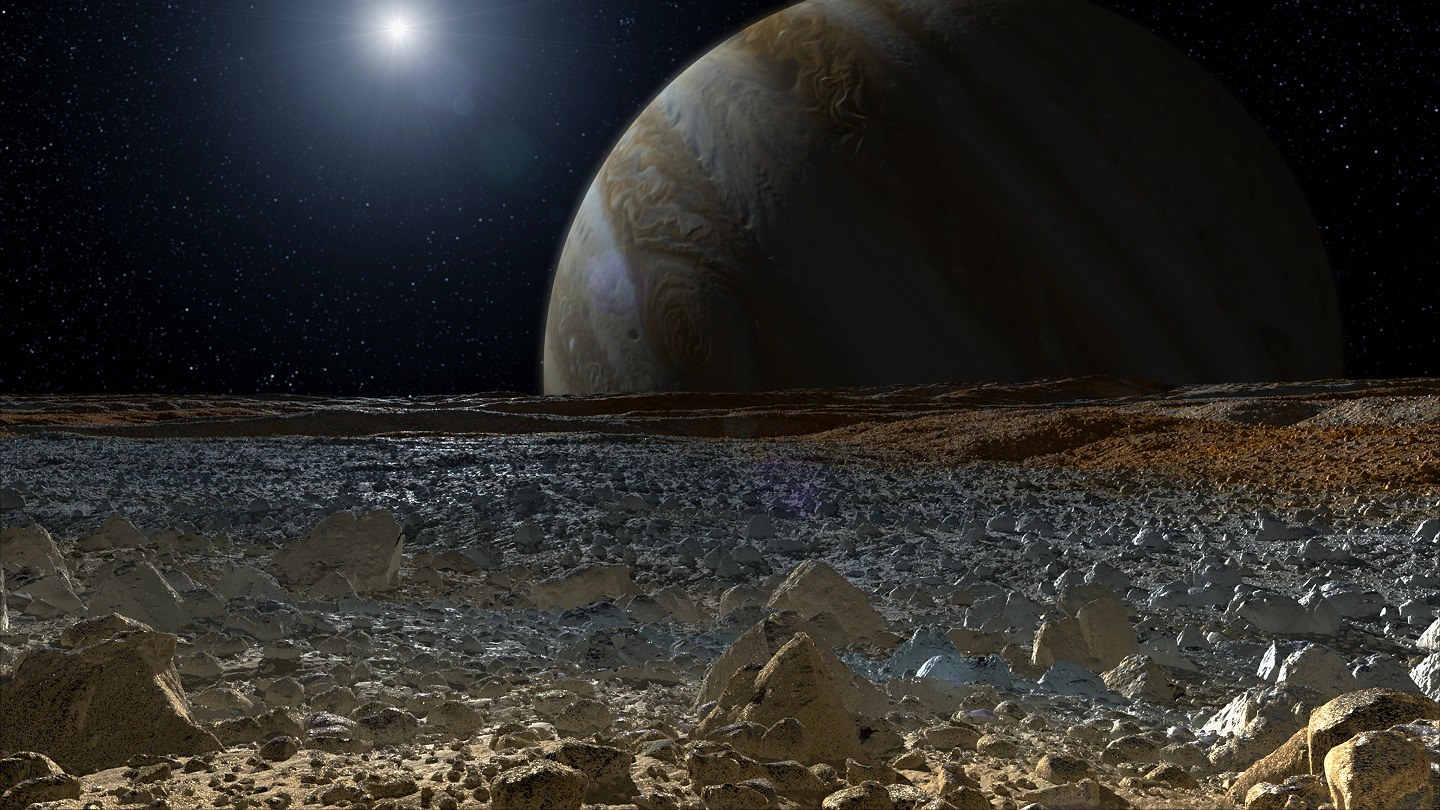Jupiter's moon Europa
Jupiter's moon Europa
With a diameter of about 3122 kilometres, the icy moon Europa is slightly smaller than Earth's moon. Tidal forces exerted on Europa by the nearby planet Jupiter - in the background in this artistic representation - together with the neighbouring moons, very likely ensure that Europa's water content is not completely frozen. Despite the minus-140-degree Celsius cold surface, a global sub-crustal ocean already exists a few kilometres below the ice crust. Between 1995 and 2003, the Galileo space probe discovered not only water ice on the surface, but also coloured mineral salts that were possibly dissolved in water that was pressed upwards from the interior of the moon and froze there. Europa's ocean may contain more water than all Earth's oceans combined, and may even harbour conditions for the existence of life.

